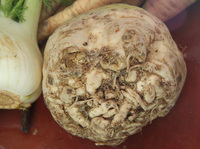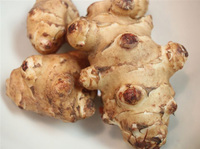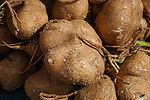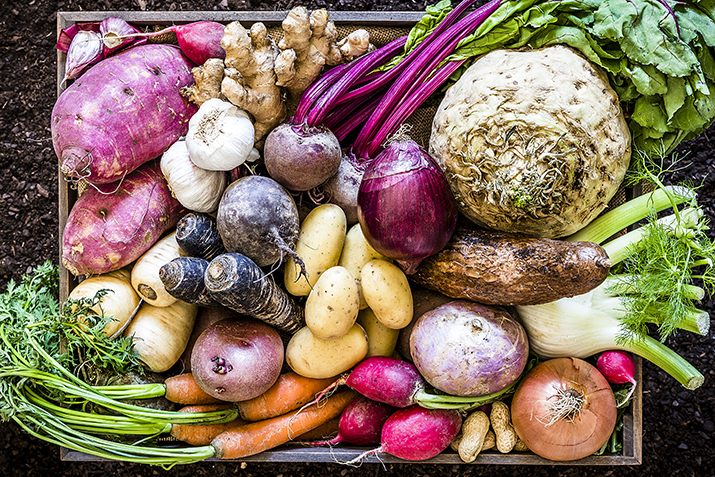
In the days before refrigeration, many people had to rely on a small range of vegetables that would keep them through the winter months. Smoking, canning, salting, and other preserving methods were very important. But for fresh food, about all that was available were root vegetables. We’re all familiar with many root veggies, like potatoes, carrots, onions, garlic, and a few others. But there are many more that get very little attention today and which give you an opportunity to stretch your culinary repertoire.
Many of the more obscure winter roots were once quite common. Only in the last 50 or 60 years have they lost out to a greater variety of fruits and vegetables available all year round. Better technology has made it possible to have tropical fruits in the supermarket in January, and now people demand them. But with the increasing interest in eating locally produced food, we’ll have to get to know these tried-and-true root vegetables available in the winter months.
Celery Root
Also called celeriac or knob celery, this has a milder, sweeter taste than regular celery. This has to be peeled before use, which can be a bit of work. But it’s a great addition to lots of dishes, adding flavor and texture to anything using other root vegetables. It can also be used raw in a salad, adding a little crunch to your greens. In fact, you can use it anywhere you would use regular celery.
Jerusalem Artichokes
This is a bit of a misnomer as it has nothing to do with Jerusalem nor is it related to artichokes. These knobby roots are also called sunchokes, a better name since they are the roots of sunflowers. They look like very rough ginger roots, but there’s no other similarity. These roots are indigenous to the Americas and are one of the very few vegetables transplanted to Europe. They have gone in and out of fashion for hundreds of years. Jerusalem Artichokes don’t have to be peeled and can be eaten raw in salads, pickled, or julienned into a stir-fry. You can do anything that you would do with a potato. They taste like a water chestnut but milder and have a nice crunch.
Jicama
Many people may have heard of this but wouldn’t know it if they saw it. Jicama comes from Mexico and is often found in American produce sections. It is the root of a poisonous vine and looks a lot like a potato. It is a starchy root with a sweet, fruity taste. It is usually eaten raw. It pairs well with spicy food and ingredients like chili peppers and with tart fruits like limes. It has since spread to Asia where it has become very popular in Vietnamese cuisine.
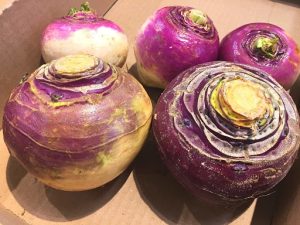
Rutabagas
These round, waxy roots are related to the turnip and can be cooked the same way. They are also called the Swedish turnip. They have yellow flesh that turns orange when cooked. The taste is similar to the water chestnut. Because they like cold weather, they are a featured ingredient in Swedish, Finnish, and Scottish dishes.
Sometimes exploration is fun. Remember that the next time you’re wandering the farmers market or the produce aisle in your grocery store.
